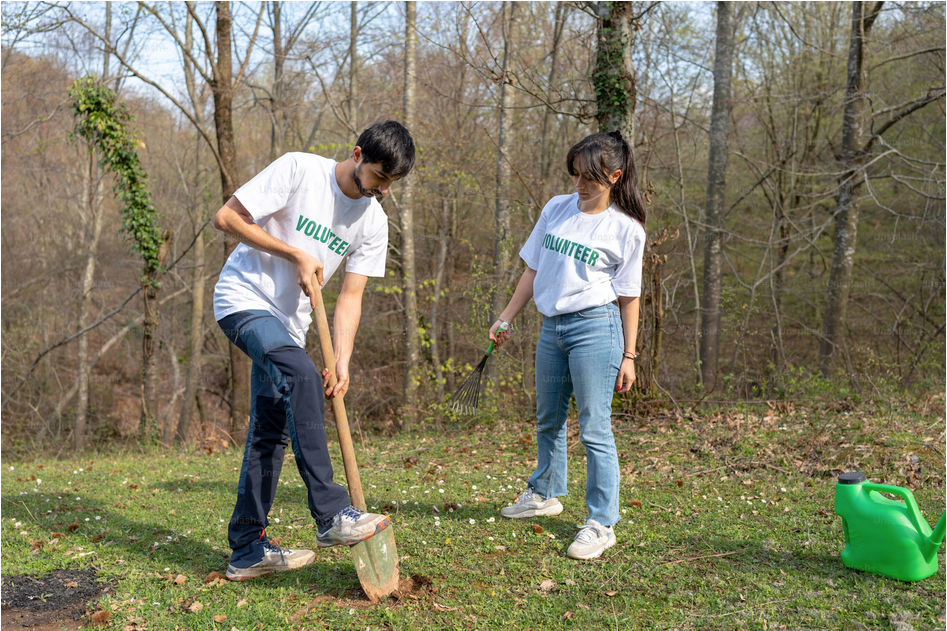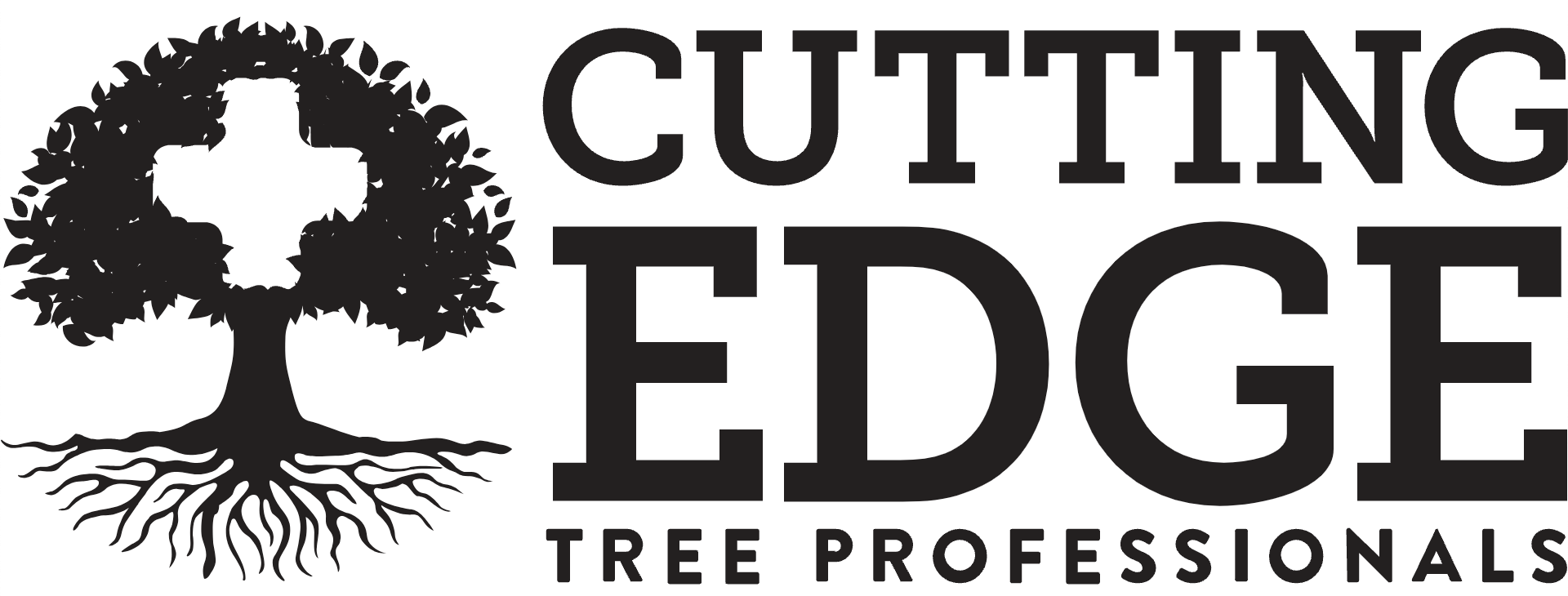By Dave Jackson || Arborist Representative at Cutting Edge Tree Professionals
While out talking with home and business owners I often see trees that are stressed simply because they were planted incorrectly. They may have been planted too deep, mulched incorrectly, are being girdled by landscape material and/or circling roots, the wrong tree in the wrong place or mature tree size was not considered.
Balled-and-burlapped trees are grown in the ground at the nursery. When the tree is ready for sale, a machine called a tree spade lifts the root ball from the ground. The root ball is wrapped in burlap, set in a wire basket and is tied tightly to keep it intact while transporting.
Plant the Right Tree in the Right Place
This is an important step but is often overlooked. There is a tree out there for every landscape situation and every owner preference. The key is to match your objectives with the tree species characteristics and planting site conditions. One of the biggest mistakes I see is not accounting for mature tree size. When shopping for a tree, check to see what size it will be at maturity and account for that accordingly. This will help to minimize future conflicts with buildings, fences, driveways, sidewalks, and utility lines.
Find the Root Flare
This is an extremely important, yet often overlooked step. When we purchase a tree at a nursery we assume the soil line, whether balled and burlapped or in a container, is at the proper depth on the tree. However, this is often not the case. Locating the root flare, sometimes referred to as the root collar, is critical for determining the planting hole depth.
A tree “flares” out at ground level. It does not grow straight out of the ground like a telephone pole. If you find the root flare is below the soil line, remove the excess soil prior to planting. If no flare is found, remove the soil to the topmost root.
Digging the Hole

Now that the root flare has been identified, the depth of the planting hole can be determined. This should be measured from the bottom of the root ball to the root flare. The “flare” must be planted at or slightly above ground level; this is done to prevent the flare from moving below grade as the soil settles after planting.
Dig a broad, shallow planting hole, only as deep as the root ball and 1-2 feet wider than the root ball. The tree should be planted on firm undisturbed soil so it does not settle, tilt, or end up being planted too deep. Loosen the soil as far around the tree as possible, at least 1-2 feet. Breaking up the soil allows newly emerging roots to easily grow into the soil. “It is better to put a $50 tree in a $200 hole than to put a $200 tree in a $50 hole.”
It is better to put a $50 tree in a $200 hole than to put a $200 tree in a $50 hole.
Dave Jackson, Arborist Representative
Place the Tree in the Hole
Lift the tree by the root ball, not the trunk. Lifting by the trunk can cause the root system to separate from the soil and roots to break. It is important to keep the root ball intact during this process, keeping good root/soil contact. Once in the hole, straighten the tree and step back. Ensure it is at the proper depth. Cut and remove the twine around the base of the trunk. Cut and remove as much of the wire basket and burlap as possible. Lay what can’t be removed flat in the planting hole.
Once the tree is set to the correct depth and the trunk is straight, begin to backfill the hole gently, but firmly. Pack the soil with your hands lightly to eliminate major air spaces. Be careful not to overly compact the soil as soil pore spaces are needed for water and oxygen. Add a few inches of soil at a time, tapering the sides of the planting hole. When done, water the entire excavated area.
What About Soil Amendments
Keep soil amendments such as compost and additional topsoil to a minimum, 10% at most. If added, mix amendments uniformly into the backfill. Note, research has found that optimum plant establishment is possible when plants are set into existing soils with good internal drainage. Incorporating large amounts or organic matter into the backfill may be harmful to the tree’s survival. Organic matter tends to hold too much water around the root system and the plant can smother from a lack of soil oxygen.
Staking the Tree
Staking is not necessary in most situations. Trees planted in windy locations, trees with undersized root balls, and trees planted in sandy or wet soils will most likely need to be staked. Use two stakes and wide flexible tie material. Stake trees loosely to allow for trunk movement. Movement allows for proper development, promotes trunk taper, and increases strength. When staking is necessary, it must be done correctly and left in place no more than one growing season.
Mulching
Mulching is one of the most beneficial things that you can do to keep your trees healthy and vibrant. When applied correctly, mulch can dramatically improve tree growth. To promote root development outside the planting hole, mulch more than just the root ball. Much as much of the area as possible, even beyond the canopy spread (called the drip line) of the tree, with a 2-3-inch layer of organic mulch.
Wood chips can make very good inexpensive mulch, especially when they contain a blend of leaves, bark, and wood. Other organic mulches include bark, wood chips and shavings, pine needles, and composted leaves. Avoid mulching against the tree’s trunk, be sure the base of the trunk and root flare is exposed.
In Summary
Find the root flare to determine the planting hole depth. Dig a broad, shallow planting hole, at least a foot or two wider than the root ball. Set the tree in the hole by lifting the root ball, not the trunk. Cut the twine, wire basket, and burlap away. Gently pack the backfill around the root ball and water the entire excavated area. Stake only if necessary using two opposing flexible ties. Much 2-3 inches deep with an organic mulch, keeping the mulch away from the trunk.
For assistance with your next tree planting project contact an ISA certified arborist at Cutting Edge Tree Professionals. Our centre county number is (814) 201-9757, or you can message us here using our contact form.
